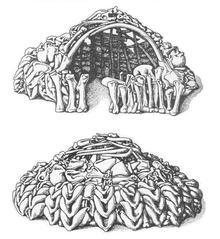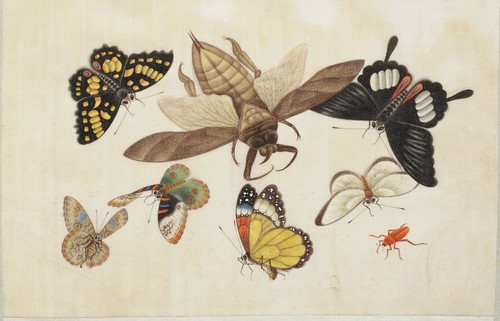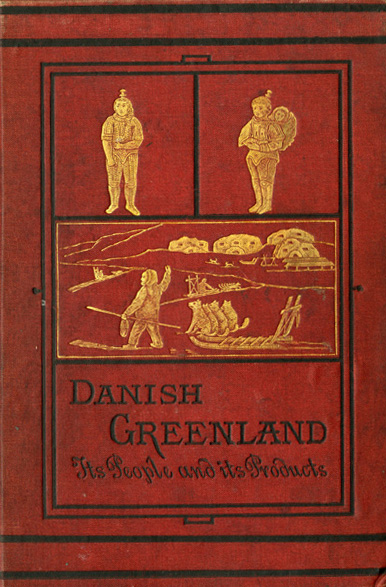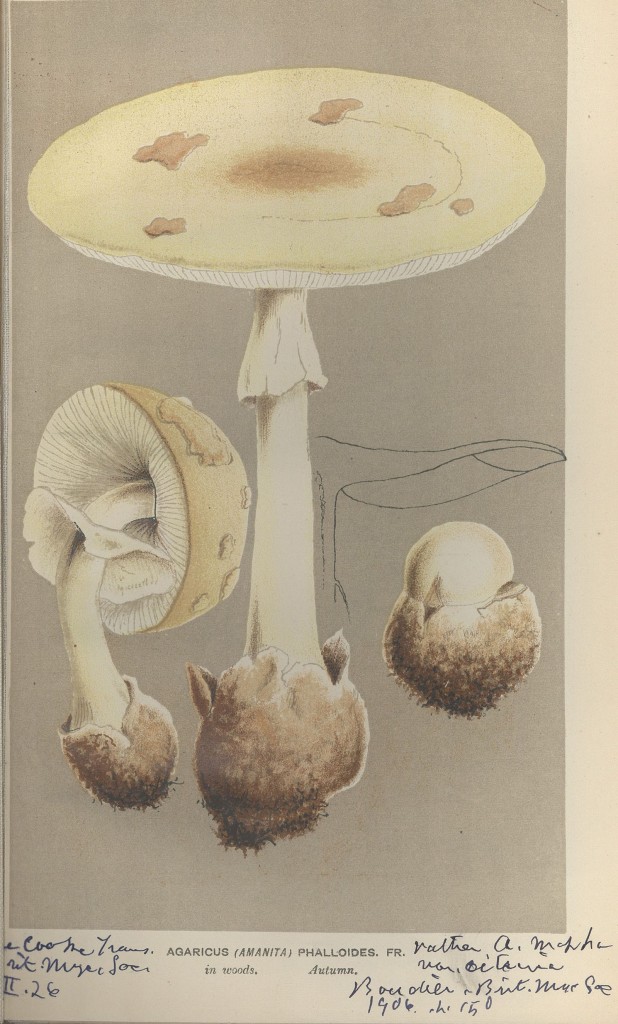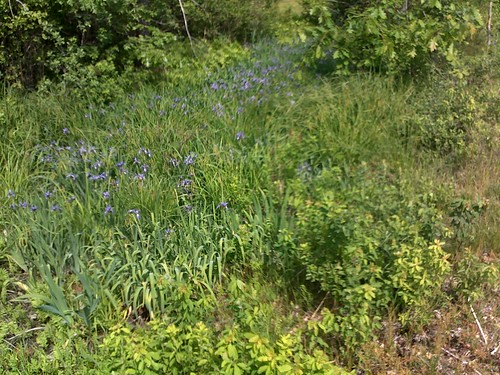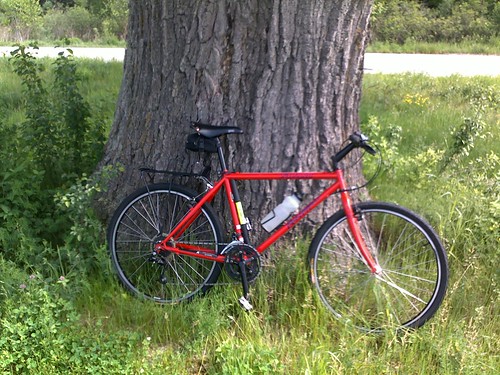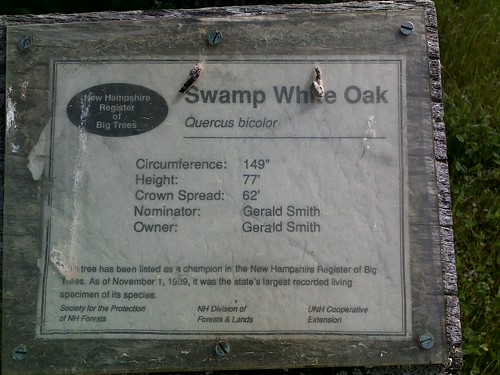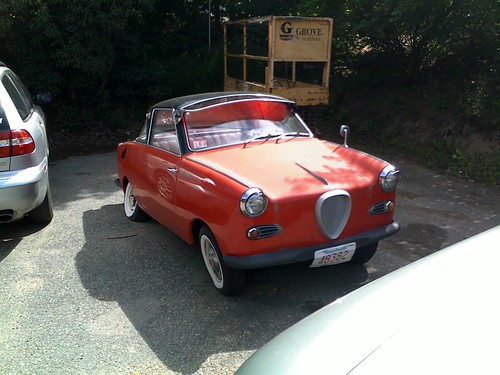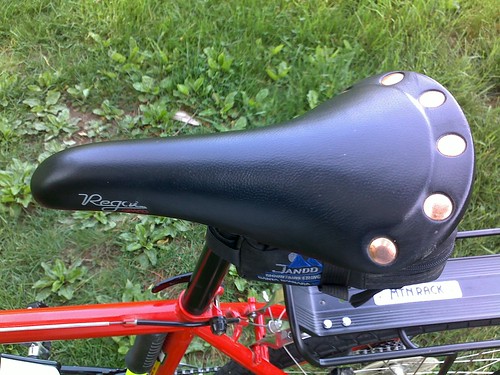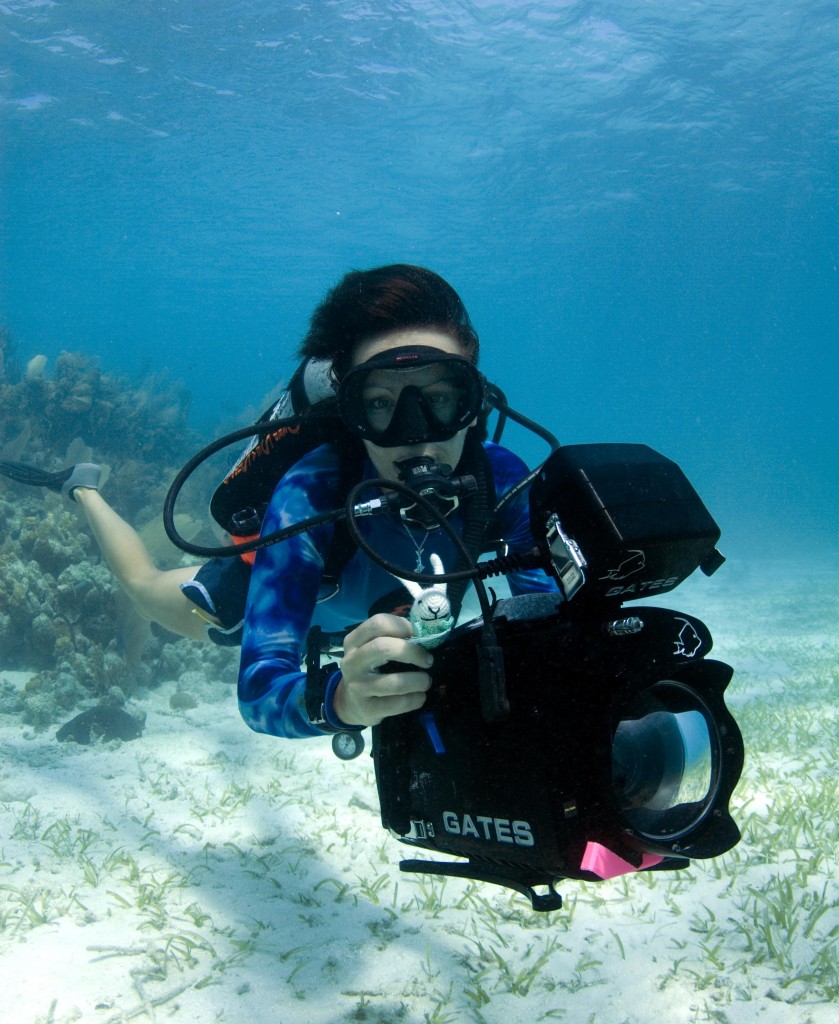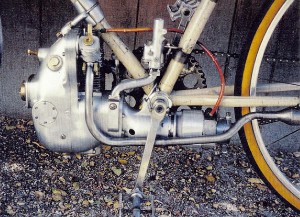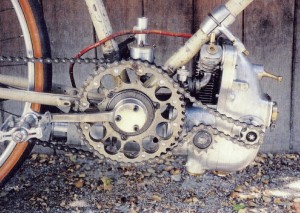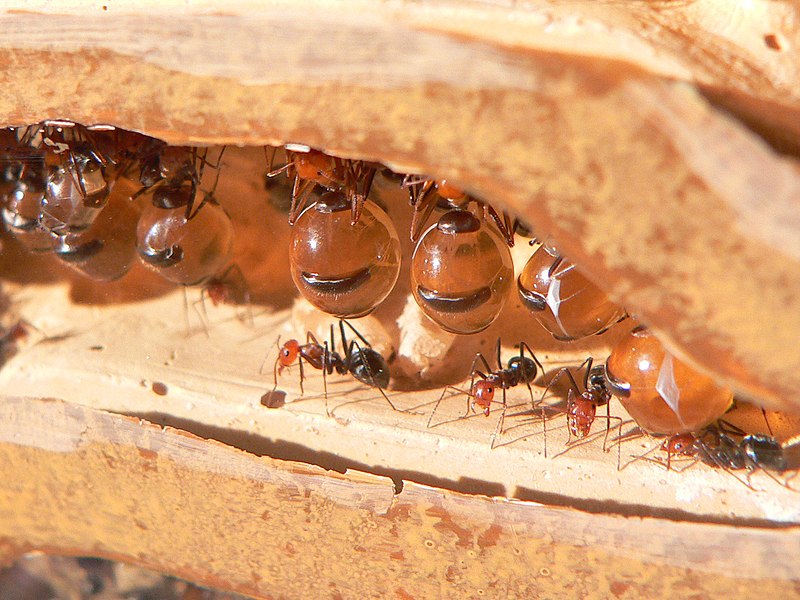Got the new bars swapped in. Molto comfortable so far. Next upgrade – enhance the engine so that it can average 15mph and not be sweating at the end of a ride (street clothes theory of bicycling).
Category Archives: nomadics
Who was the Archigram of mammoth bones?
The border between natural history and architectural design deserves far more exploration, beyond the odd science museum diorama. We have been living in buildings for more than 20,000 years, if Mithen’s book is to be believed, but nearly half of that period has seemingly been thrown outside the pale of architectural history.
Who was the Archigram of mammoth bones? … Geoff Manaugh | Canadian Centre for Architecture (CCA).
The Harvard Herbarium
First, let me acknowledge peacay as undisputed champion of Internet cool-stuff-finding. Today’s Butterfly Album post is a multi-dimensional winner. First, there are the images. I’m particularly partial to a painting containing what I think is a Giant Water Bug:
*
Then there’s the intriguing info on where the insects were collected:
The only other information known is that the butterflies and insects were collected from the Aralia (spikenard) and related Tetrapanax papyrifera (pith paper tree) plant species.
Followed by a link to the Harvard Herbarium for more info on the pith paper tree. The Herbarium rates a big marker pin on my mental map – it’s close, houses the Blaschka’s glass plant models and – most important for me – was the base of operations for Richard Evans Schultes (prev. posts here and here). I’ve wandered around the Herbarium website before, but today – thanks to peacay – I kicked around the Botany Library On-Line Exhibits (not sure I’ve ever happened upon this part of the site before). There’s a nice series on book covers/bindings:
*
*
a section on the ‘other’ Amanita (phalloides)
*
and then there’s this, from the Economic Botany Clipping File:
Dr. Schultes teaching in the Nash Lecture Hall
Painting by Hannah Barrett, November 1994
The caption in the tiles says, “Richard Evans Schultes, Director Emeritus, demonstrating the blowgun in the Nash Lecture Hall, the Botanical Museum, Harvard University, 15 November 1994.” Ethnobotanical explorer in lab coat? Check. Blowgun, darts and quiver? Check. Little potted cactus ($100 says Lophophora williamsii)? Check. More interesting details that I’ll leave for you, the reader? Check. I’m curious as to what molecule is diagrammed on the chalkboard…
One last picture to end the post – from the book Beata Ruris Otia Fungis Danicis Impensa. Enjoy!
Second shakedown ride
One nice thing about transitioning from ‘old guys who get fat in the winter‘ to just old guy out for a ride is that stopping to see the sights is a perfectly reasonable thing to do. I’m not in any particular hurry and if I see something I want to check out, I do.
Semi-hidden patch of flag iris. Sorry about the quality – I don’t know what was up with the cell.
*
A BIG white oak. I’ve known about this tree for years, but today was the first time I stopped and said hi.
*
*
*
I saw the Goggomobil Dart in town yesterday and popped by to make sure it was not for sale (it’s not). Out back there was a second Goggo.
Goggomobil Dart (Australian)
*
Goggomobil TSxxx (Bavarian)
Low and Slow
-or-
Reduce, re-use, recycle
*
The title of the post comes from a zine published back in the early 70s (called -anyone? anyone?- Low and Slow) covering the wild world of hang gliding. How wild? Folks were making gliders out of Visqueen and bamboo. I mailed off for a copy – because I wanted to build one – sadly, it’s long gone, though a post here suggests I can reread all the Low and Slows on a DVD. Enough of all that – the point of the post: my bike racing (venue = triathlons) days are done – I’ve found myself wanting a bike I can just jump on and ride (comfortably). My fast but twitchy road bike does not exactly fit the bill. My old mountain bike, however…
So, let the conversion to two-wheeled Vista Cruiser begin! IMHO, there are 2 things that determine 90% of overall bike ‘feel’: frame geometry and tires. You’re not going to do much about frame geometry – about the only thing you can alter is the front fork and that costs $$$. Tires can make a surprising difference and unless you’re racing (in which case, why aren’t you running tubulars?) fatter ones than current fashion dictates are what I suggest. Here’s the bike – after the pic I’ll run through current and planned mods.
*
‘Fatter tires’ is relative – although they’re much thinner than the knobbies that I took off, these are fat road rubber. They’re Kenda Kwests (the 100psi variety) – a nice balance of volume and low rolling resistance. I also mounted a rear rack and put on new, longer grips – I like riding with my hands close together, as if I’m up on the flats on a drop bar. The shakedown ride today was a success – the bike rode like a dream.
I haven’t decided whether to move pedals over from the road bike to this beastie – I’m leaning towards yes. The road bike’s saddle will probably come over at the same time. After that, the next order of business will be handlebars. I have an On One Midge ready and waiting, but because road handlebars are not the same diameter as mountain bars I need to replace the brake levers (not too $$, and I wanted to do it anyway) and swap the thumb shifters for barcons ($$$, and though I LOVE bar-cons, I would have made do). The other short-term priority are shopping bag panniers – the grocery store is within easy biking distance – ’nuff said.
Down the road a bit, I’d like to tweak the drive train a bit. I don’t know whether the chain stay will accommodate a significantly larger middle chainring, but if it will I’ve always been partial to half-step setups – with the triple it’d be a half-step plus granny (and contra Mr. Brown, I’ve used a half-step setup successfully).
Way down the road I’m thinking about fenders, lighting, a front rack – part of me says that I should just save my pennies for a Velo-Orange frame (or something similar) and build up a baguette hauler around it. We’ll see. First order of business is to re-integrate ‘just hopping on the bike’ into my life.
Update – the saddle and pedal switch happened this morning, before a second shakedown run (pics from which will be posted later today).
Big brass faux rivets!
The Shark Girl and Bunnyfish
This just in – Bunnyfish assists the Shark Girl while filming in Belize:
Vertical Blue 2010
The Shark Girl sent me a heads-up a couple days ago – she and D are in the Bahamas (Dean’s Blue Hole, Long Island to be exact) videoing the Vertical Blue 2010 freediving event. The footage is amazing – you can find all of it here and write-ups of the days events here. Below, William Trubridge does a world record unassisted (no fins, no nothin’) dive to 92 meters. My back of the envelope calc puts that at approximately 30 stories – yowza.
Atlatls and Flint-knapping
Boy, I wish I could scoot off to this:
September 19: Fourteenth Annual Northeastern Open Atlatl Championship & Chimney Point Knap-In and Festival of Nations
Participate in or watch this annual championship, part of the Festival of Nations with the Crown Point, NY, State Historic Site. The sport of atlatl throwing is based on the ancient hunting technique of using the atlatl or spear thrower. Flint knapping and other Native American life and craft demonstrations. Festival of Nations. Top Ten Vermont Fall Event. Co-sponsored by Vermont Archaeological Society. Vermont Archaeology Month program. Camping available at DAR State Park. 10:30 – 4:30 PM.
Where: Chimney Point State Historic Site, Addison directions
Contact: ChimneyPoint@HistoricVermont.orgSeptember 20: ISAC Atlatl Championship
Second day of atlatl International Standard Accuracy Competition. The Knap-in and Festival of Nations continues. After ISAC, master class/coaching for boys and girls. 10:00 AM.
Where: Chimney Point State Historic Site, Addison directions
Contact: ChimneyPoint@HistoricVermont.org
Info from here.
define infinity pool
An infinity edge pool (also named negative edge, zero edge, “disappearing edge,” or vanishing edge pool) is a swimming pool which produces a visual effect of water extending to the horizon, vanishing, or extending to “infinity“. *
Via a tweet from Atlas Obscura, a very high, pucker inducing, natural infinity pool – on the lip of Victoria Falls!
Testing the RSS fix – 2nd try
A tiny jewel from Ettore
Via the New Cafe Racer Society, a link to the Bugatti Revue’s post on the T72 engine.
*
It’s 10.5 cubic centimeters of fury (about the size of a large model airplane engine), but this baby has twin OHCs and is SUPERCHARGED! What an incredibly cool bit of machinery. Click through to the Bugatti Revue for loads more pix.
The only thing I can think of that would make me grin even more broadly would be desmodromic valves… As a side note – I’ll bet the fatness where the crankarms meet the spindle is some sort of freewheel.
Three groups of three
Social insects.
- Six Legs Better – a history of myrmecology.
- The Superorganism – group-level evo strategies.
- Slant – social insects, info theory and echoes of Brunner’s great Stand on Zanzibar.
Tepuis.
- Lost Worlds of the Guiana Highlands. Outstanding – geology, history, biology and lots of gorgeous pictures.
- Climb to the Lost World – I need to read this. Among other things, it may stop me from thinking ‘Ben Nevis’ as soon as I hear Dr. MacInnes’ name (it’s a hell of a thing to be type-cast).
- The Lost World – the original trip to Maple White Land.
*
The Ottoman Empire (and the world to its west).
- The Snake Stone (or The Janissary Tree or The Bellini Card) – great very-late Ottoman mystery.
- The Siege – on it’s way to me from #amazonfail (current events Twitter-joke).
- The Adventures of Baron Munchausen. Hurray for the Sultan’s cannons – I want one.


